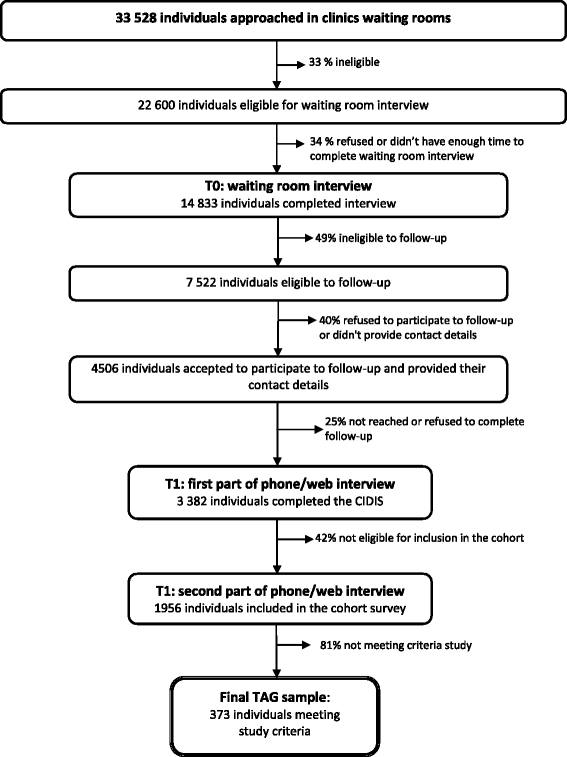Generalized anxiety disorder in primary care: mental health services use and treatment adequacy
- PMID: 26492867
- PMCID: PMC4618956
- DOI: 10.1186/s12875-015-0358-y
Generalized anxiety disorder in primary care: mental health services use and treatment adequacy
Abstract
Purpose: Generalized Anxiety Disorder (GAD) is a common mental disorder in the primary care setting, marked by persistent anxiety and worries. The aims of this study were to: 1) examine mental health services utilisation in a large sample of primary care patients; 2) explore detection of GAD and minimal standards for pharmacological and psychological treatment adequacy based on recommendation from clinical practice guidelines; 3) examine correlates of treatment adequacy, i.e. predisposing, enabling and needs factors according to the Behavioural Model of Health Care Use.
Methods: A sample of 373 adults meeting DSM-IV criteria for Generalized Anxiety Disorder in the past 12 months took part in this study. Data were drawn from the "Dialogue" project, a large primary care study conducted in 67 primary care clinics in Quebec, Canada. Following a mental health screening in medical clinics (n = 14833), patients at risk of anxiety or depression completed the Composite International Diagnostic Interview-Simplified (CIDIS). Multilevel logistic regression models were developed to examine correlates of treatment adequacy for pharmacological and psychological treatments.
Results: Results indicate that 52.5 % of participants were recognized as having GAD by a healthcare professional in the past 12 months, and 36.2 % of the sample received a pharmacological (24.4 %) and/or psychological treatment (19.2 %) meeting indicators based on clinical practice guidelines recommendations. The detection of GAD by a health professional and the presence of comorbid depression were associated with overall treatment adequacy.
Conclusions: This study suggests that further efforts towards GAD detection could lead to an increase in the delivery of evidence-based treatments. Key targets for improvement in treatment adequacy include regular follow up of patients with a GAD medication and access to psychotherapy from the primary care setting.
Figures
References
-
- American Psychiatric Association . Diagnostic and statistical manual of mental disorders. 5. Arlington, VA: American Psychiatric Publishing; 2013.
-
- Ballenger JC, Davidson JR, Lecrubier Y, Nutt DJ, Borkovec TD, Rickels K, et al. Consensus statement on generalized anxiety disorder from the International Consensus Group on Depression and Anxiety. J Clin Psychiatry. 2001;62(Suppl 11):53–58. - PubMed
Publication types
MeSH terms
Substances
Grants and funding
LinkOut - more resources
Full Text Sources
Other Literature Sources
Medical
Miscellaneous


